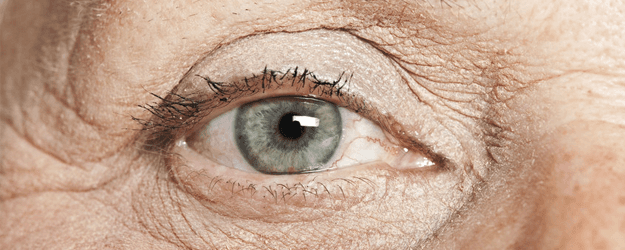Maintain Healthy Eyes
The best way to keep your eyes healthy is by keeping yourself healthy. It may sound too simple, but we all really know what to do:
- Eat well
- Exercise
- Drink plenty of water
- Avoid stress
One more thing for your eye’s health is to avoid excessive exposure to ultraviolet (UV) radiation. Sunglasses and a brimmed hat are essential to protect your eyes if you spend a lot of time in the sun. Your sunglasses must filter out UVA and UVB.
Some regular eyeglass lenses (Trivex, polycarbonate, high index, or Transitions) have built-in protection from UV radiation, or it can be applied as a coating to standard plastic lenses. There is some debate that blue light might be harmful and sunglasses do help with those wavelengths.
Eating well is not as simple as it sounds in our fast-food culture. We recommend a good high-quality multivitamin like MaxiVision Whole Body Formula
(available in Eagle Eye Optique).
This formula contains good portions of the pigments lutein and zeaxanthin, which help protect against macular degeneration. MaxiVision also contains all the key ingredients of AREDS2 (Age-Related Eye Disease Study) as well as a number of proprietary ingredients not normally found in multivitamins.
Other quality supplements can be found at health food stores or vitamin shops, but MaxiVision is the best multivitamin we have found. Also, check out the nutrition page
on this site.
Moderation and variety are the keys to a healthy diet. Avoid highly processed carbohydrates like sugars and white flours. Use natural fats like olive oil, coconut oil, and butter in moderation. Avoid highly processed or synthetic fats. Fat does not make you fat, simple carbs do. Eat a wide variety of fruits, vegetables, berries, and herbs. They contain pigments and phytonutrients that help keep your body’s repair systems in order. Lean meat, fish, and poultry are very efficient food sources. Watch the serving size, though. Organic foods matter. Who thought putting pesticides and herbicides on our food was a good idea?

Possible Eye Issues You May Experience:
Blepharitis
This is chronic inflammation of the eyelids and eyelashes. It often causes redness, swelling, and irritation of the lids along with crusts at the lash line. One of the causes of blepharitis is poor lid hygiene, while the other cause is excessive oil produced by glands in the eyelids.
Cataracts
Cataracts are a cloudiness in the crystalline lens inside the eye and are usually a normal part of the aging process. Cataracts affect vision by scattering or blocking light as it passes through the lens of the eye.
Symptoms of cataracts include cloudy or blurred vision, nighttime glare, faded colors, and double vision or ghost images in one eye. Fortunately, it can usually be treated with surgery and an intraocular lens implant.
Most people have only a small distance prescription after cataract surgery but still need help for reading.
Conjunctivitis
Conjunctivitis is also called “pink eye.” It happens when the conjunctiva (the clear membrane over the white of the eye) becomes inflamed or infected.
Causes of conjunctivitis include bacteria, virus, allergy, chemical sensitivity, or mechanical irritation. Conjunctivitis can be very contagious, and so those with it should take precautions to prevent its spread.
Some other situations can cause the eye to get pink as well, such as a scratched cornea, acute glaucoma, or inflammation inside the eye (iritis). The doctor usually needs to check a pink eye to determine the cause and the appropriate treatment.
Diabetic Retinopathy
Anyone with diabetes is at risk of developing diabetic retinopathy, but the degree of blood sugar control you maintain and the number of years you are diabetic greatly affect your chances of complications.
Diabetic retinopathy damage includes fluid leaking out of blood vessels in the retina, called exudates; blood leaking out of vessels, called hemorrhages; and fragile new blood vessel growth into areas they don’t belong, called neovascularization. These problems can cause permanent vision loss and blindness.
Treatment can prevent or minimize the damage to vision if diabetic retinopathy is detected early. This is why all diabetics are strongly encouraged to have a dilated eye exam at least once per year. Optomap digital retinal evaluation saves images, so we can effectively monitor changes from one year to the next.
Dry Eye
Our tears are made up of three important layers and dozens of chemicals. When aging, environment, medications, or other causes interfere with the production of the tear film, dry eye results.
Symptoms of dry eye can range from a minor occasional inconvenience to a debilitating disability but include scratchiness, grittiness, burning, tearing, itching, and blurring of vision.
Treatment can be simple, like artificial tears and nutritional supplements, or may include medications to boost tear production, or mechanical plugs to keep tears from draining away too fast.
Flashes and Floaters
The vitreous is the gel that fills the center of our eyes. It shrinks as we get older and can pull on the retina. The tugging on the retina causes flashes of lights to be seen. The vitreous can then pull away from the retina and clump together. These clumps cast a shadow when you are in a brightly lit neutral background, like looking at the sky. They are called floaters, and they usually fade or drift off over time without any treatment. This is called a posterior vitreous detachment.
Sometimes a shrinking vitreous will remain too firmly attached to the retina and can tear a hole in the retina. This can quickly lead to retinal detachment. This is a very serious complication and requires prompt treatment.
The symptoms of the dangerous retinal detachment are very similar to the normal vitreous detachment - flashes and floaters.
The only way to tell one is OK or not is to have a dilated examination of the retina within a day or two of the start of symptoms. Shimmering lights, which last only several minutes to about an hour, may be a visual aura associated with a migraine.
Glaucoma
The aqueous is a clear fluid that fills the front chamber of the eye. In general, if too much aqueous is produced or if not enough can drain out of the eye, then the fluid pressure backs up.
This rise in pressure gets transferred throughout the entire eye. The optic nerve in the back of the eye is the part that is most sensitive to this rise in pressure, and nerve fibers can get crushed over time. The damage is called glaucoma. Glaucoma can cause permanent blindness.
There are usually no symptoms during the early stages of glaucoma, but a routine eye exam will test your eye pressure and the doctor can look for changes in your optic nerve. With proper treatment, glaucoma can usually be controlled.
Keratoconus
The front part of the eye, which lies over the colored iris, is called the cornea. Sometimes, a portion of the cornea will thin. The normal fluid pressure within the eye causes that part of the cornea to bulge outward. The cornea then takes on a conical shape instead of the normal shape. This produces vision changes that cannot be corrected by glasses or soft contact lenses.
Rigid gas permeable contact lenses or scleral lenses are usually fit for these cases and provide a very good quality of vision.
Macular Degeneration
The macula is part of the eye that you use when you look right at something, like when you read or watch TV. This is where your vision is the most sensitive. Some people develop a slow atrophy, or thinning out, of this part of the eye as they get older. Other people get a sudden hemorrhage into the macula. Those most at risk for macular degeneration are blue-eyed, blond-haired, fair-complected persons of northern European descent, but can still occur in people with a lot more pigment.
You can minimize your risks for macular degeneration by protecting yourself from UV radiation (sunglasses), by eating dark leafy vegetables (like spinach) to get enough of the pigment lutein in your diet, and by taking a good multivitamin/mineral supplement. Quitting smoking and reducing sugar intake also decrease your risk.
Retinal Detachment
The retina is the layer of cells in the back inside of the eye, which catch the light and turn it into vision. It is like the film in a camera. The retina normally lies on a layer of blood vessels. If a portion of retina lifts off of its blood vessel layer, it dies within the week. Symptoms of retinal detachment include:
- Flashes of light
- A sudden increase of floaters
- A shadow in a portion of your vision (this is a true emergency, and you should have it evaluated promptly within hours, not days)
On a positive note, flashes and floaters can also occur with a very common situation called a posterior vitreous detachment. The vitreous gel inside the eye pulls and tugs on the retina but does not tear the retina loose. The symptoms of a peripheral vascular disease (PVD) are similar to a retinal detachment. It is only by looking inside the eye can we determine if it is normal or not.
Call us today to schedule your next appointment.
219-662-1600
219-662-1600
We accept Vision Service Plan (VSP) and Medicare.

